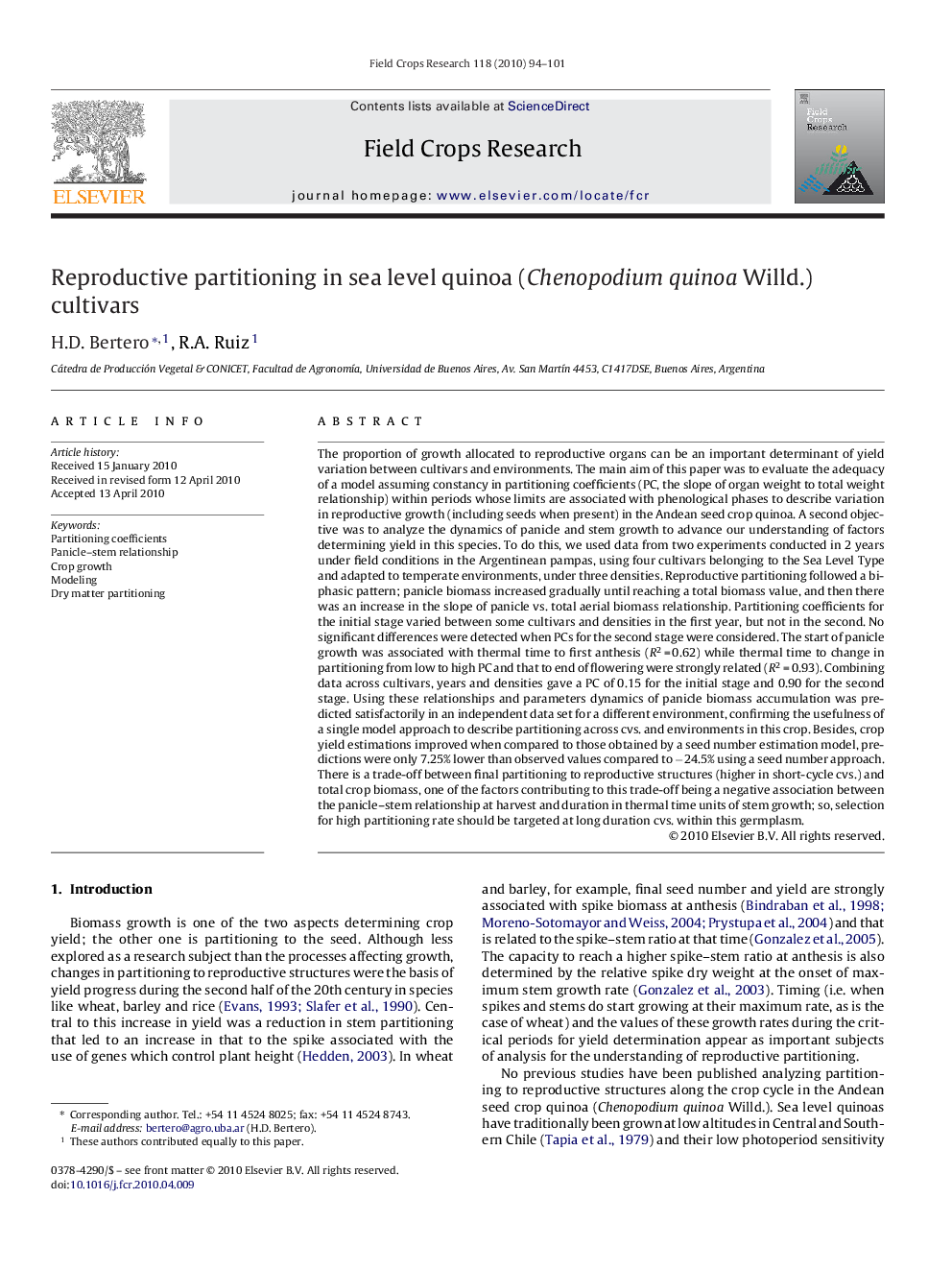| کد مقاله | کد نشریه | سال انتشار | مقاله انگلیسی | نسخه تمام متن |
|---|---|---|---|---|
| 4510916 | 1321881 | 2010 | 8 صفحه PDF | دانلود رایگان |

The proportion of growth allocated to reproductive organs can be an important determinant of yield variation between cultivars and environments. The main aim of this paper was to evaluate the adequacy of a model assuming constancy in partitioning coefficients (PC, the slope of organ weight to total weight relationship) within periods whose limits are associated with phenological phases to describe variation in reproductive growth (including seeds when present) in the Andean seed crop quinoa. A second objective was to analyze the dynamics of panicle and stem growth to advance our understanding of factors determining yield in this species. To do this, we used data from two experiments conducted in 2 years under field conditions in the Argentinean pampas, using four cultivars belonging to the Sea Level Type and adapted to temperate environments, under three densities. Reproductive partitioning followed a bi-phasic pattern; panicle biomass increased gradually until reaching a total biomass value, and then there was an increase in the slope of panicle vs. total aerial biomass relationship. Partitioning coefficients for the initial stage varied between some cultivars and densities in the first year, but not in the second. No significant differences were detected when PCs for the second stage were considered. The start of panicle growth was associated with thermal time to first anthesis (R2 = 0.62) while thermal time to change in partitioning from low to high PC and that to end of flowering were strongly related (R2 = 0.93). Combining data across cultivars, years and densities gave a PC of 0.15 for the initial stage and 0.90 for the second stage. Using these relationships and parameters dynamics of panicle biomass accumulation was predicted satisfactorily in an independent data set for a different environment, confirming the usefulness of a single model approach to describe partitioning across cvs. and environments in this crop. Besides, crop yield estimations improved when compared to those obtained by a seed number estimation model, predictions were only 7.25% lower than observed values compared to −24.5% using a seed number approach. There is a trade-off between final partitioning to reproductive structures (higher in short-cycle cvs.) and total crop biomass, one of the factors contributing to this trade-off being a negative association between the panicle–stem relationship at harvest and duration in thermal time units of stem growth; so, selection for high partitioning rate should be targeted at long duration cvs. within this germplasm.
Journal: Field Crops Research - Volume 118, Issue 1, 6 July 2010, Pages 94–101